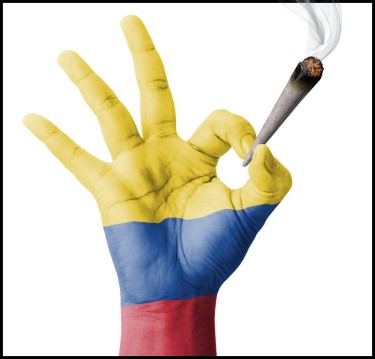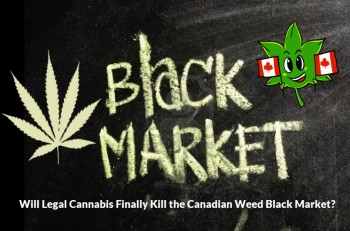The confiscation of cannabis shipments on Venezuela's coastline and border with Colombia highlights the nation's significance as a crucial conduit for a specific strain of Colombian cannabis flooding the markets of Latin America.
Colombian National Police confiscated 2.5 tons of cannabis at the beginning of March, hidden in a truck loaded with plastic furniture and kitchen utensils. The seizure occurred in the municipality of Maicao, located in the border department of La Guajira, on the boundary between Colombia and Venezuela. According to the Anti-Narcotics Directorate (DIRAN) of the Colombian National Police, the seized consignment was planned for Venezuela and various nations in Central America.
In the following days, Venezuelan officials declared the discovery of 457 kilograms of cannabis left unattended on the Caribbean Sea's coast in Falcón State. These confiscations came after earlier seizures that occurred towards the end of 2022 in Venezuela, with one of the seizures on December 15th weighing over 3.4 tons. Officials claimed that this was the largest marijuana seizure in the country over the past ten years.
Between September and December 2022, various operations conducted along Venezuela's northern coast resulted in confiscating roughly 7.6 tons of marijuana, with this most recent seizure included. InSight Crime's media monitoring and a report by Venezuela's National Anti-drugs Superintendence (SUNAD) indicate that around 10 tons of marijuana were seized in Venezuela throughout 2022.
Independent reports and official sources suggest that since there is no significant cultivation of cannabis on a large scale in Venezuela, most of the drugs seized and flowing through the country originate from the northern mountains of Colombia's western Cauca department.
Deep Crime Analysis
The regional market's demand for Colombian-produced marijuana, particularly the high-THC strain known as "creepy," is fueling the significant seizures in Venezuela. The nation is a convenient transit point between Colombia and numerous other regional markets.
The fact that Venezuela has a history of being a drug corridor plays to the advantage of marijuana traffickers. It is a known route for transnational cocaine trafficking, and the involvement of top political and military figures in drug trafficking protects those looking to export drugs overseas.
Moreover, Venezuela's strategic position on the continent provides maritime links to numerous Caribbean nations, land and river corridors to Brazil and convenient routes to Central American countries.
The high-THC strain of marijuana known as "creepy" from Cauca is transported on Colombian roads to major cities such as Cali, Medellín, and Bogotá. It is temporarily stored before being distributed to various Colombian border departments, primarily Norte de Santander, Vichada, and La Guajira.
Criminal networks looking to purchase cannabis in Cauca must negotiate with the Western Coordinating Command (CCO), one of the unorthodox factions of Colombia's formerly active Revolutionary Armed Forces (FARC), also known as the ex-FARC mafia. This group dominates cannabis cultivation in the region.
After entering Venezuela, the cannabis is transported to the states of Sucre, Falcón, or Nueva Esparta, where it is loaded onto boats heading for Caribbean markets. In addition to being a gateway to Central and North American markets, Caribbean nations like the Bahamas and Trinidad & Tobago have also reported detaining Colombian nationals with significant quantities of cannabis from Colombia.
InSight Crime spoke with an investigator, a local military officer, and a fisherman who works near informal disembarkation points in Falcón State, all of whom requested anonymity for security reasons. According to them, the Camacaro Cartel authorizes drug shipments and controls boats in Falcón. The Camacaro Cartel, which has strong political ties, took over from the Paraguaná Cartel following the arrest of its leader, Chiche Smith. Meanwhile, in southern regions, Brazil's three primary criminal organizations have also obtained Colombian marijuana.
The two primary Brazilian prison gangs, the First Capital Command (Primeiro Comando da Capital - PCC) and the Red Command (Comando Vermelho - CV), transport cannabis through the Río Negro basin on the Colombian-Venezuelan border and then move it to the northern state of Roraima.
The Orinoco River is utilized by the Family of the North (Familia do Norte - FDN), a lesser-known gang that operates in the Brazilian state of Amazonas. The gang transports cannabis from Colombia's Vichada department through the Amazonas department in Venezuela and into Brazil.
The Acacio Medina Front, a faction of the ex-FARC mafia, oversees the cross-border corridor across the Venezuelan state of Amazonas, which shares a border with Brazil. This group controls the movement along the main corridors in the region. It is known to be one of the main connections and distributors for Brazilian mafias operating in the jungle area.
In addition, small-scale drug trafficking networks transport marijuana in limited quantities using human couriers or private vehicles with hidden compartments that cross through illegal border crossings, commonly known as "trochas." The marijuana is then stored in warehouses in Venezuelan territory before being transported by boats to the Caribbean coast of the country.
Although criminal organizations incur significant transportation costs to transport drugs across Colombia and deliver them to Venezuela, the expenses are far outweighed by the enormous profits generated by this illegal trade. While a kilogram of "creepy" marijuana is valued at $42 in the Cauca mountains, its worth can skyrocket to $2,800 in Brazil.
Conclusion
For organized crime groups operating in the area, the illegal marijuana traffic from Colombia to Venezuela and beyond has grown to be a significant source of income. The attraction of large profits and Venezuela's strategic position continue to make it a hub for drug trafficking despite efforts by law enforcement agencies to crack down on the activity.
It has been challenging for law enforcement to keep up with the drug flow due to unauthorized border crossings, hidden compartments in private automobiles, and small-scale shipments of marijuana in combination with large-scale loads in boats and trucks. Furthermore, the involvement of senior military and governmental figures in the drug trade has given the industry a measure of impunity to expand.
A multifaceted strategy, including governments, communities, individuals, and law enforcement organizations, is necessary to combat drug trafficking in the area. Only by banding together can we possibly have any chance of eliminating the adverse effects of drug trafficking and ensuring a safer and more prosperous future for all.







